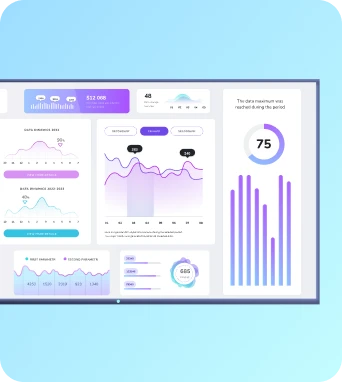Advanced signage analytics
Advanced signage analytics is the practice of collecting, correlating and interpreting playback metrics, viewer counts, interaction events and environmental signals from digital displays to quantify engagement, measure campaign effectiveness and drive automated scheduling, content personalisation and device maintenance across signage networks.
What is Advanced signage analytics?
Data fusion and signal processing for signage analytics
At the technical core of advanced signage analytics is a data fusion layer that ingests varied telemetry types and normalises them into a consistent event model for subsequent analysis. Telemetry sources typically include player-side playback logs, heartbeat and resource utilisation metrics, peripheral sensor readings such as camera-based anonymised counts or motion detectors, user interactions captured by touch or QR code scans, and contextual inputs like calendar, weather or location metadata. A practical implementation will use lightweight agents on Fugo.ai players or compatible hardware to buffer and compress events locally, then transmit encrypted batches to a central ingestion endpoint during scheduled windows or when network conditions permit. Inline examples of processing include aggregating frame-level playback timestamps into session records, mapping beacon proximity signals to estimated dwell times, and applying smoothing filters to camera-derived counts to reduce false positives from transient movement. Once events are in a central store, analytics pipelines apply enrichment and correlation steps: appending campaign and creative identifiers to playback segments, joining calendar entries to occupancy spikes, or correlating high CPU usage with failed content renders. Time-series databases and columnar stores work well for throughput, while stream processing engines can compute rolling engagement metrics such as 30‑minute average viewer counts or real-time attention scores. For dashboard presentation and automation, these computed signals feed a rule engine so that, for example, a Fugo.ai playlist will deprioritise a creative that falls below a minimum attention threshold for three consecutive days, or trigger a maintenance ticket when a device reports repeated playback failures and rising temperature metrics. Throughout, privacy-preserving techniques such as on-device anonymisation, edge summarisation and differential thresholds ensure compliance with organisational policies and regulations.
Deployment strategies and operational considerations for analytics at scale
Deploying advanced signage analytics across a multi-site estate requires attention to telemetry reliability, network variability and the manageability of the data pipeline. A common deployment pattern separates responsibilities between edge and cloud: edge components perform initial filtering, anonymisation and aggregation to reduce bandwidth and privacy exposure, while cloud services handle long-term retention, heavy analytics workloads and cross-site correlation. For Fugo.ai customers this typically means enabling device telemetry collection on each player, configuring secure endpoints for upload, and selecting retention policies appropriate to storage budgets and reporting needs. During rollout, validate the ingestion pipeline with pilot groups of players that represent diverse network conditions so you can tune batching windows, retry strategies and compression settings to avoid saturating constrained links. Practical considerations include synchronising clocks for accurate timestamp joins, versioning analytics schemas to prevent pipeline breaks when players upgrade, and instrumenting observability so that data gaps are detected quickly. Common pitfalls are over-instrumentation that creates too much noise for analysts, poorly normalised timestamps that complicate cross-source joins, and failure to account for daylight saving or localised schedules in time-based aggregations. Monitoring should encompass both health metrics of the analytics pipeline—ingestion latency, error rates, storage utilisation—and business KPIs such as campaign reach and average dwell. Optimisation techniques include pre-aggregating common metrics at the player, using delta compression for incremental uploads, and scheduling heavier analytical jobs during off-peak hours. Use cases for Fugo.ai and similar platforms include optimising lobby screens by matching content to observed peak dwell windows, automating maintenance workflows for flaky players, and integrating anonymised engagement data with workplace dashboards to inform occupancy planning and internal communications strategies.
Final Thoughts on Advanced signage analytics
Keep the learning going...
Adaptive content rendering
Adaptive content rendering is a technique for digital signage that dynamically modifies media presentation based on screen size, orientation, network bandwidth and contextual signals such as time, location and audience. It ensures legibility, consistent branding and efficient use of resources by choosing appropriate layouts, resolutions, codecs and fallback assets for each display.
Adaptive streaming
Adaptive streaming is a delivery method that changes video bitrate and resolution in real time to match current network bandwidth and device capability. It divides content into short segments encoded at multiple qualities so players can switch between streams to prevent buffering and keep playback continuous on signage displays.
Advantech digital signage players
Advantech digital signage players are purpose-built media edge devices and embedded PCs from Advantech designed to run signage applications, decode multimedia, and connect to content management systems. They provide reliable playback, network management interfaces, and hardware acceleration for video, making them suitable for TV dashboards and workplace displays.



